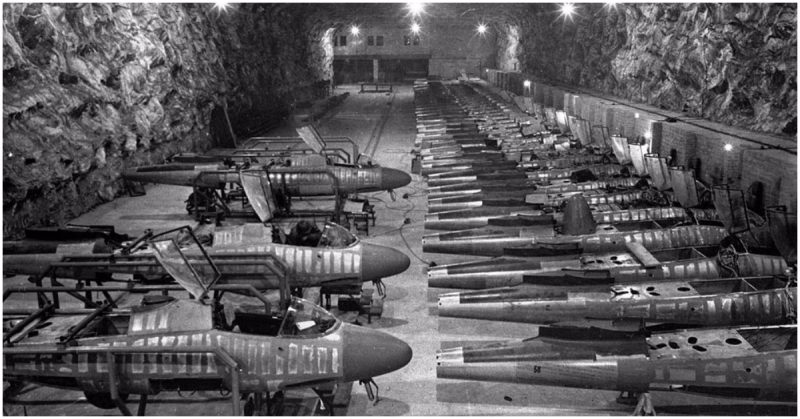During WWII Nazi Germany led the world in jet technology. Late in the war, the Germans tried to use their advantage to turn the tide of the conflict in their favor. They launched the Heinkel He162 Salamander – a jet fighter.
It was a desperate attempt to win by rushing innovative technology into combat. For all its importance as one of the first jet aircraft, the Salamander was too little, too late.
Commissioning the Future
The official order for a jet fighter was issued on September 8, 1944. German scientists and engineers had spent years researching jet technology which had been successfully used to attack Britain with V1 and V2 rockets. Trials of jetpacks had also taken place. However, it was the first time the military would be putting the technology into action as part of a plane rather than a missile.
First Flight
After the release of the order for a jet fighter, the Nazi war machine rushed to build one. The Heinkel He162 first flew on December 6, 1944, only 38 days after the factory producing it had received the detailed plans.
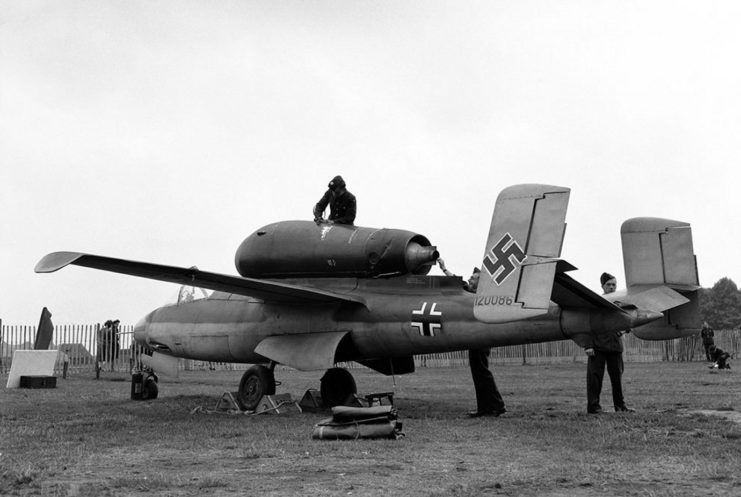
The Name of the Program
The name Salamander referred to the whole program to put a jet fighter into the skies. It became associated with the Heinkel He162 as the product of that program.
Designed to Intercept
When the Salamander was commissioned, Germany was in retreat. The Salamander’s main purpose as a fighter was not to take the fight to the enemy but to shoot down Allied bombers pounding Germany.
Wood and Metal Body
The Salamander was made from a mixture of wood and metal. The fuselage was a streamlined design manufactured from a light metal alloy with a plywood nose. The wing, built in a single piece, was made of wood and tipped with metal.
A Modern Cockpit
The cockpit of the Salamander foresaw the design they would follow for jet fighters. It had a rounded, upward hinging canopy and an ejector seat, a new technology developed during the war.
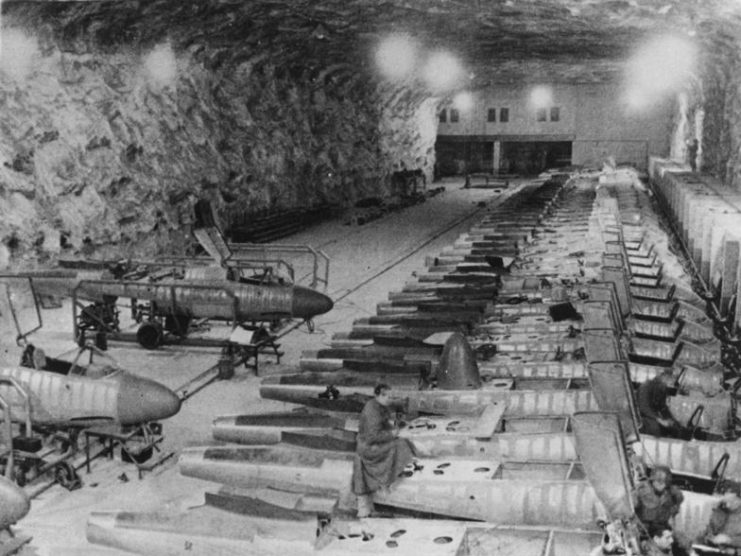
No Concern for Maintenance
Maintenance and repair were given little consideration in the design of the Salamander. It was assumed others from the massive assembly lines would replace any jets that became dangerous or unusable.
Engine Position
To save time on design and production, the engine was mounted on top of the plane. It avoided the need to develop the rest of the aircraft around the engine, with its exhaust and intake pipes. However, it caused problems for pilots. The plane was relatively aerodynamic, but it was unstable and therefore difficult to fly and fight with.
Armament
The Salamander was equipped with two 20mm cannons. There had been a shift during the war toward cannon in place of machine-guns on fighters, as the explosive shells of cannon could penetrate tougher fuselages and destroy self-sealing fuel tanks.
Speed
The maximum speed of the Salamander was 522 miles per hour. For comparison, the Focke-Wulf Fw190, a favorite of German pilots, had a top speed of 426mph, while the Gloster Meteor, the only Allied jet fighter to see action in the war, could reach up to 410mph.
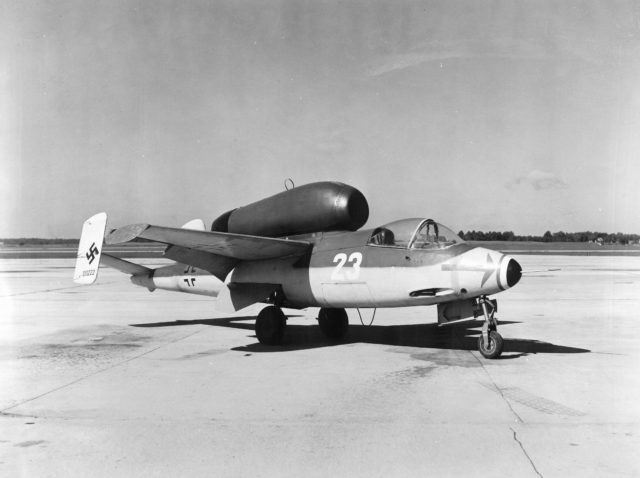
Reaching Heights
The Salamander could fly to 39,500 feet. To reach that altitude, it climbed at up to 4,200 feet per minute.
Adhesive Problems
The adhesive used in the first few Salamanders caused problems. It contained an acid that slowly destroyed the wood it was meant to hold together. As a result, one of the undercarriage doors dropped off during the first flight, and four days later the wing fell apart during a test flight.
Mass Production Measures
Plans were made to mass produce the Salamander. A network of sub-contractors was set up, including furniture makers and woodworkers who had the skills to make the wooden components. Hundreds of factories and thousands of workers prepared for the project.
In the end, reality struck. The German government had aimed to produce 4,000 Salamanders a month, but only 200 were completed. 800 more were part-way through the production process by the time the Allies captured their underground factories.
Young Pilots
Trained and experienced pilots were in increasingly short supply. To make up the shortfall, potential pilots for the Salamander were recruited from the Hitler Youth. They were given flight training in gliders. It was expected they would finish their training by flying the Salamander in conflict.
It was a deeply flawed plan. The unwieldy and fast-moving Salamander provided a challenge for the most experienced fighter pilots. For youths with hardly any training, getting into the cockpit of the hastily designed aircraft was a recipe for disaster.
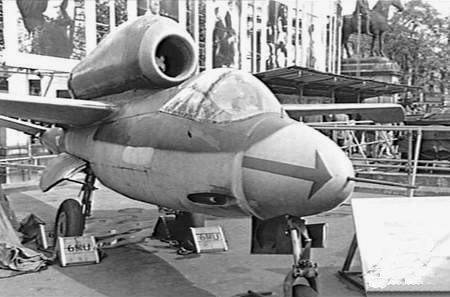
Going to Combat Groups
While the Hitler Youth were trained to become pilots, the first completed Salamanders were sent to existing fighter squadrons.
In February 1945, 1/JG1 gave up their Focke-Wulf Fw190s to start flying Salamanders. Many of the pilots were unhappy about it. The Fw190 was one of the best fighter planes of the war. The Salamander was an unwieldy novelty that had barely been properly tested, let alone engaged in combat.
On May 4, a group of three squadrons of jet fighters was created at Leck in Schleswig-Holstein. By then the Nazi empire was nearly at an end. Four days later, the airfield was captured by the Allies.
Evaluation by the RAF
Following the war, the Royal Air Force took 11 Salamanders to Britain to study them. The British had developed their own jet aircraft, but it gave them an opportunity to investigate all options to produce a better jet fighter.
Source:
Francis Crosby (2010), The Complete Guide to Fighters & Bombers of the World
